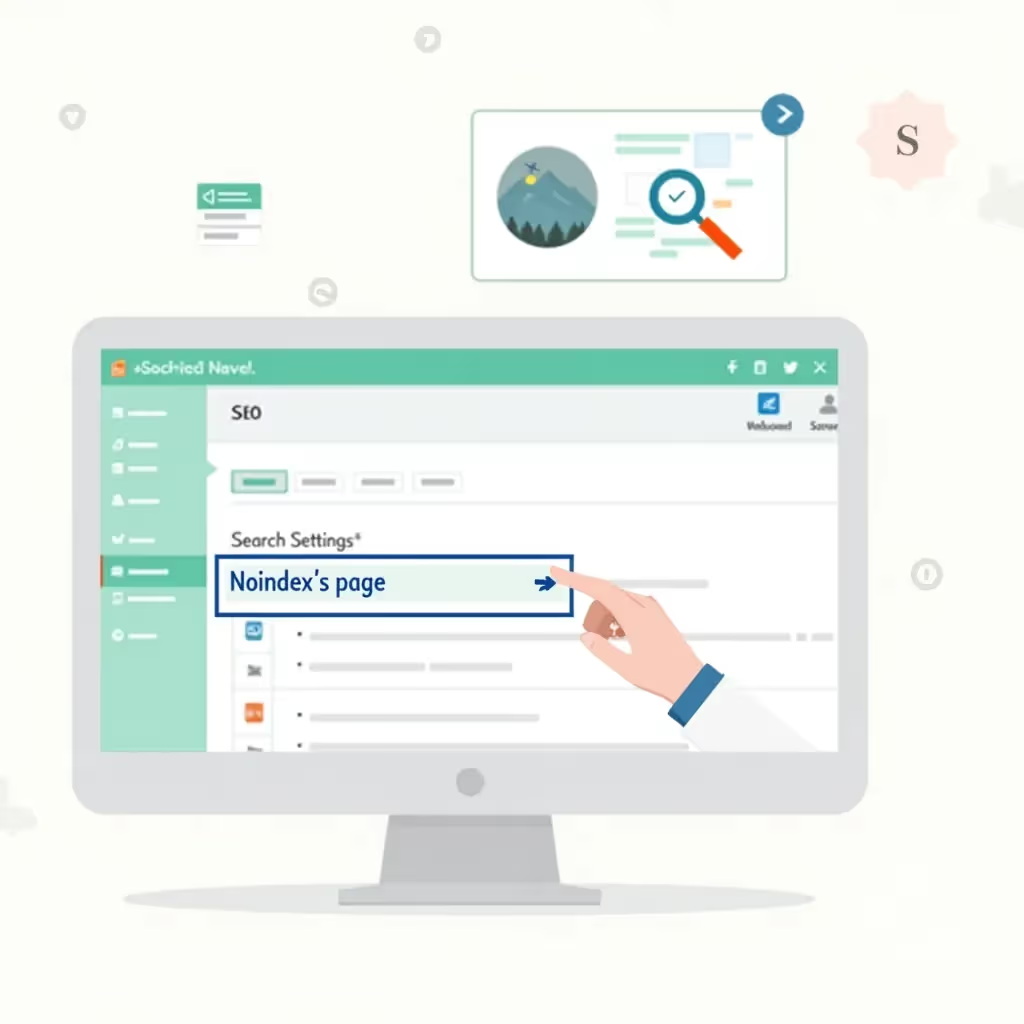What Is Image SEO?
Image SEO, or image search engine optimization, involves optimizing images on a website to help them rank better in search engines such as Google. While many site owners focus primarily on text-based SEO strategies, few fully understand the importance of image optimization. Search engines can't ‘see’ images as humans do—they rely on the metadata and other signals to understand them. By optimizing your images with the proper strategy, you can improve your site's visibility on search engines, drive valuable traffic, and enhance user experience.
Image SEO should not be overlooked, especially in industries that rely on visuals, such as eCommerce, travel, or real estate. Optimized images help your page load faster (a ranking factor), provide alternative descriptions (improving accessibility), and can even appear in relevant image searches, bringing new traffic directly from the Google Images section.
Why Is Image SEO Important?
Image optimization can improve many aspects of a website's performance. Let’s break down why it is so vital:
- Faster loading times: Optimized images take up less bandwidth, resulting in quicker page load times. Pages that load faster have lower bounce rates, rank better, and provide a better user experience.
- Increased visibility: Incoming traffic from an image search can drive significant traffic. This is particularly useful for eCommerce and other visual businesses.
- Better user experience: Image SEO improves accessibility, ensuring those who rely on screen readers or low bandwidth have a quality browsing experience.
- Increased rankings: Properly optimized images contribute to your overall SEO efforts. This includes factors such as speedy page loading and mobile-friendliness.
Given the importance of images to both users and search engines, optimizing images to improve rankings should be an integral part of your overall SEO strategy.
Key Elements of Image SEO
To optimize images successfully, certain factors need to be considered. Below are the main elements you should focus on.
1. Choosing the Right File Format
Choosing the appropriate file format ensures that your website loads quickly without sacrificing image quality. The most common formats are:
| Format | Description | Best Use |
|---|---|---|
| JPEG | A compressed format ideal for photos with many colors. | Best for images with rich color details, such as photographs. |
| PNG | A format that supports high resolution and transparency. | Ideal for images requiring transparency, such as logos or icons. |
| WebP | A newer format that focuses on maintaining high quality with smaller file sizes. | Great for reducing file size while maintaining quality, recommended by Google. |
| GIF | Best for animated images and small graphics with limited colors. | Best for simple animations and graphics. |
Google encourages the use of modern formats like WebP, as they maintain high quality while offering smaller file sizes. By using the appropriate format, you can improve both image quality and page speed.
2. Image Size Optimization
Reducing the size of an image without sacrificing quality is essential for page load time. Large image files can significantly impede page speed, especially on mobile devices. You can reduce file sizes using image compression tools. Some popular options are:
Use these tools to compress images before uploading them to your website. The goal is to strike a balance between the highest quality and the smallest file size.
3. Descriptive File Names
Before uploading an image to your website, ensure that the file name is descriptive, including relevant keywords but avoiding keyword stuffing. For example, instead of using a generic file name like "IMG_12345.jpg," rename it to something descriptive like "blue-running-shoes-men.jpg." This helps search engines understand what the image is about and enhances the likelihood of appearing in image search results.
4. Alt Text
Alt text, or "alternative text," is a description of the image that appears when the image cannot be displayed or is accessed by screen readers. Alt text also serves to describe the content of an image to search engines. However, it should not be used solely for keyword stuffing to manipulate rankings—keep it natural and meaningful.
In addition to aiding in SEO, alt text also ensures your site is accessible, improving user experience and complying with web accessibility standards—critical for your SEO and user interface.
For example, let’s say your image is a product photo of a chair. Instead of vague alt text like "product," a more descriptive alt text might be “A modern oak dining chair with cushioned seat.” This provides context for the image and improves chances of ranking well in search results.
5. Image Sitemaps
To help Google crawl your images more efficiently, you should add an image sitemap if your website has a large number of images. A sitemap allows search engines to find and understand your images better—especially when they are loaded on dynamic pages or via JavaScript.
To create an image sitemap, you can either use online tools (like XML-sitemaps.com) or use CMS plugins depending on the platform you are using. Google also provides specific guidelines for creating and submitting image sitemaps.
6. Structured Data and Schema Markup
Using structured data like Schema markup can help search engines better understand your image content. This can increase the chances of your images appearing in rich results (enhanced search listings that display alongside your standard results).
For example, if you run an eCommerce site, applying product schema to your images can make them appear more prominently in search results, even displaying details like product pricing, ratings, and availability directly in Google Image search results.
7. Image Placement and Relevance
Where and how images are used on a webpage also matters. Images should be relevant to the content they are embedded alongside. They should also be placed near the relevant text to give users—and search engines—additional context.
Ensure that images naturally fit within the content, supporting the flow of information. For example, don’t place an image of a sunset on a page about SEO strategies unless it somehow reflects the topic.
8. Lazy Loading Images for Performance
Lazy loading is a technique where images are only loaded once they enter the user's viewport (the part of the web page currently visible to the user). By implementing lazy loading for images, you can significantly reduce initial page load time, which is beneficial for both user experience and SEO.
Many modern content management systems such as WordPress offer lazy image loading as a built-in feature, but there are various third-party plugins and manual methods for achieving this as well.
Monitoring Image SEO Performance
Once your images are optimized, it’s important to monitor their performance to understand how effective your efforts are. Some useful tools include:
- Google Search Console – to track image indexing and identify any potential issues.
- Google Analytics – to monitor traffic that's specifically coming from image search results.
- SEMrush – for detailed SEO analysis which can include insights into image performance.
By regularly analyzing your data, you can see which images generate the most traffic and adjust your image strategy accordingly.
Conclusion
Image SEO involves a comprehensive set of strategies that go beyond simply uploading images to your website. From optimizing file names and alt texts to ensuring proper load times and utilizing structured data, it's clear that image optimization is essential to ensure both an excellent user experience and better search engine rankings.
While it may take some time and effort to ensure all aspects of image SEO are implemented correctly, the benefits are clear. Not only can optimized images drive additional traffic, but they can also enhance your site’s overall SEO quality score, improve your website’s performance, enhance accessibility, and help your brand stand out in an increasingly competitive online landscape. By following these best practices, you can ensure your website's images contribute positively to your company’s digital presence.





